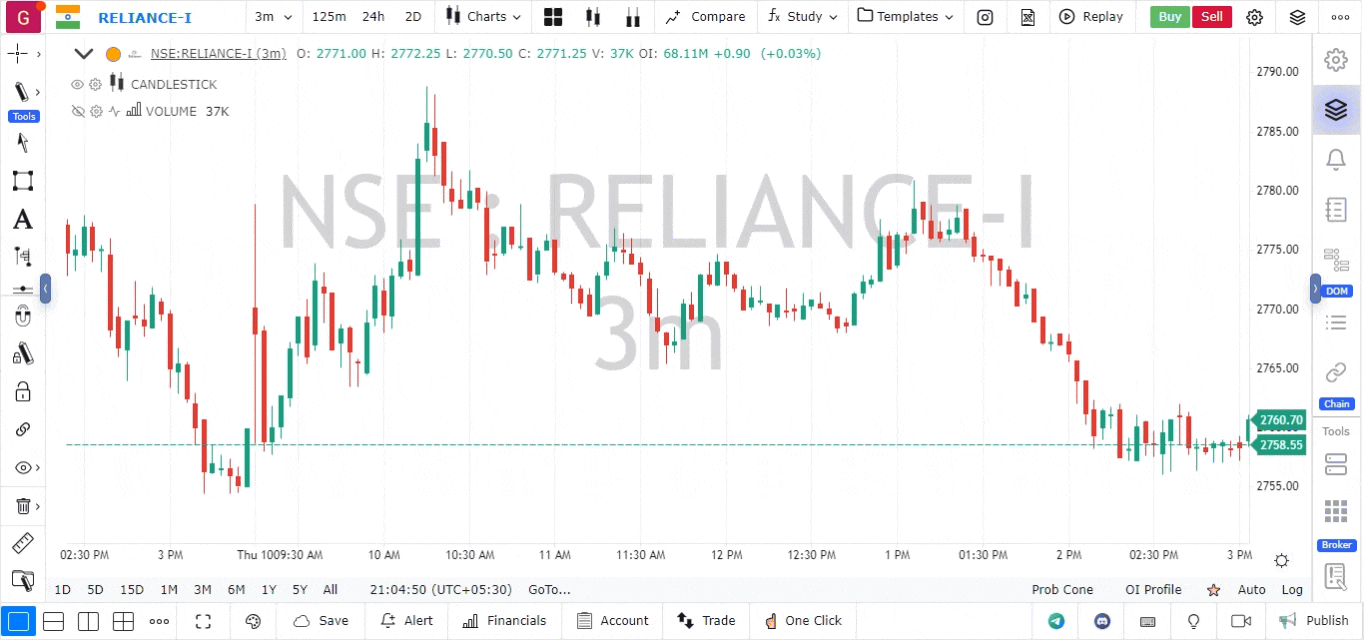Line break
General info
Three-line break charts originated in Japan during the 19th century and it is said that this technique was used in rice trading. This is another old form of charting originating from Japan along with the likes of Renko, Kagi and Heikin-ashi charts. Line-break chart was introduced to the western world by Steve Nison in his book Beyond Candlesticks.
These are known as Three Line break charts because of the default reversal value of three that is typically used. But these charts can be plotted using any other reversal value too. Hence, the appropriate generic name would be Line-break charts. They are also known as three-step new price, three-step reversal charts, Box reversal charts, Line reversal charts or Three box reversal charts.
Three line-break is a widely used name so we will stick to that. They are in widespread use in the Far East but not so much prevalent elsewhere. But this charting method is available in most of the charting platforms. Line-break chart belongs to the One-dimensional charting family such as P&F, Renko and Kagi. These time-independent charts plot only price and new price action gets captured in the chart only when there is price move which meets a certain criterion. This genre of charts eliminate noise to a large extent and plot charts with easily readable patterns.
P&F charts plot prices vertically based on a user-defined box-value and reversal value. They are more dynamic in nature and show swing price patterns. Renko charts are plotted diagonally and the user has to define only the brick-value while plotting them. They also divide price moves into number of bricks and show the swing patterns. Line break charts need only one variable to construct the chart which is known as the reversal value.
Line break chart prints the series of bars which represent increasing and falling prices. The key parameter that participates in the chart plotting is the number of the last bars for building the current bar.

It is important to note that the bars on this chart are usually called “lines”. Line Break based on closing prices so it takes the current price and compares it with the closing prices of the previous bars (lines). The number of the previous bars that participate in the calculation specified in the chart settings.
Stepwise construction
Take any stock candlestick chart. If you notice, there are the prices within the previous box. If we remove them from the charts, it will remove the noise from the chart and capture the price information that is relevant. These candle are shown with arrows.
Let’s remove those candles (examples shown in blue boxes) from the chart and connect the boxes
That becomes Line-break chart of 1 Line Break.
Line Break calculation
The most common number of Line Break setting is 3. It means that the closing price of the current line is compared to the closing price of the third line ago.
Chart settings for Line Break
Chart settings for Line Break
Each new closing price has three possible outcomes:
- a new line with the same color — build when the price goes in the same direction.
- a new line with the opposite color — build when the price change is enough to warrant a reversal.
- no new lines are added when the price does not extend the trend or the change is not enough to warrant a reversal.
An example of how to build a Line Break chart
In the example above shows areas where the line color was changed. The boxes show the level of the third bar, when it breaks, the line color changes.
Line types
There are only four types of lines
- Up Lines — Form during an uptrend.
- Down Lines — Form during a downtrend.
- Projected Up Lines — During an intraday timeframe, a potential up line that would form based on current price (before actual closing price is set).
- Projected Down Lines — During an intraday timeframe, a potential down line that would form based on current price (before actual closing price is set).
Uses of line break charts
Very much like Kagi Charts and Renko Charts, Line Break Charts are popular because of the way that they filter out noise and make price movements easy to digest and understand. Some of the typical uses of Line Break Charts are finding support and resistance, spotting breakouts, and discovering classic chart patterns.
Support and Resistance — Oftentimes, Line Break Charts reveal areas of support and resistance.
Patterns
The popular price patterns such as Head and Shoulders, Cup and Handle, expanding formations, Triangle, Rounding patterns are also applicable and valid in Line-break charts as well. The key difference however is that these patterns on the Line-break charts are price patterns minus the time element. The change in reversal value enables us to vary the magnitude of these formations.